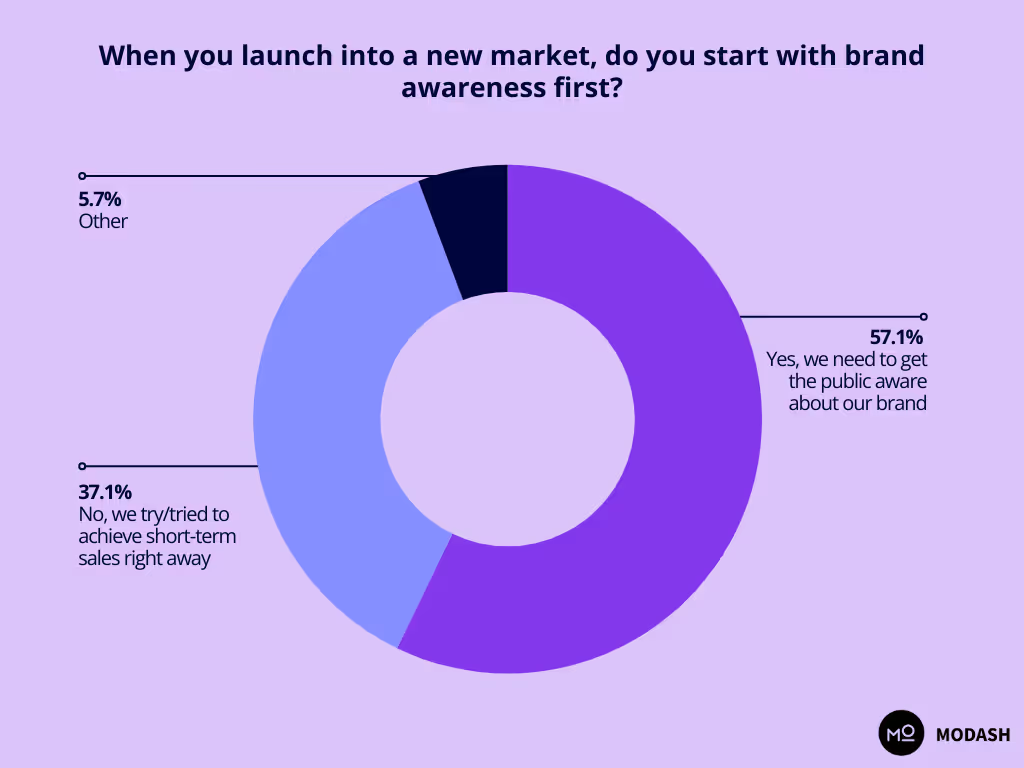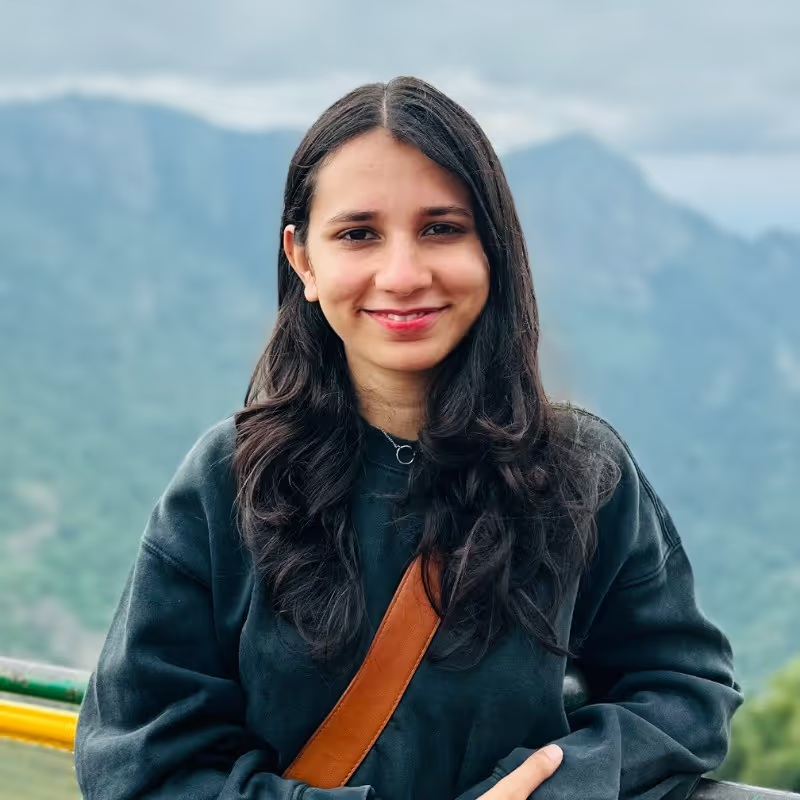You’re about to launch into a new market. As an influencer marketer, what should you be aware of? How should you prepare? What tactics can help you get the most bang for your buck?
We asked these questions to 35 influencer marketers. Here are seven pro tips and strategies to maximize your return on investment (ROI) from influencer marketing in a new market.
Psst… want to understand how influencer marketing fits into a market expansion from start to finish? Read our ultimate guide on how to approach new market launches.
1: Get to know your new market and target audience
On your home turf, you know the lay of the land. You know your consumer’s expectations – what they like, what they don’t, what marketing they will respond to. You know the buying power. You understand the culture because you’re immersed in it – the slang, the trends, the norms.
But in a new market, you might not know your way around, especially if you’re expanding in a customer segment or location that is very different from that of your current customer base. Abdullah Khan shares an example:
Kat LaFata also highlights the importance of understanding market preferences:
Small details matter – the local humor, the cultural nuances, the seemingly inconsequential consumer habits. But you also have to learn the logistical elements – shipping costs, existing competition, and legal requirements. If you do the work of understanding all of this before launching an influencer campaign, you will be able to:
- Choose the right influencers who have built trust in the local market
- Design collaborations that resonate with your new buyers
- Adapt your strategy and goals based on research
Hear it from Abdullah himself:
Before you ever set foot in a new market, take a step back and absorb as much information as you can about the place and customer cohort. But how long should you spend on research?
Forty percent of the marketers in our survey started planning for a market expansion one to three months in advance, and over 48% of those we polled took more time than that to prepare. Don’t skimp on this time – add it to your calendar so you don’t find yourself having to rush.

While you’re at it, you should consider getting support in learning about your new market:
- If you have someone in your team who knows the area you’re expanding to, involve that person every step of the way.
- If you don’t have that option, hire a firm or freelancer to assist you.
Want to take the culture absorption up a notch? Hire someone from the local market to be your eyes and ears. More on that in the next point.
2: Rely on local help (especially in a market whose culture is vastly different)
If you’re navigating an entirely new market, you can’t catch up on decades of consumer culture, societal expectations, and influencer marketing practices. What works in Taiwan, for instance, is a far cry from what works in the United States.
Your best bet is to hire a local agency or freelancer to represent you, especially when entering a market whose language you don’t speak because the local marketer partner can communicate on your behalf. Additionally:
- You get firsthand info about influencers and their reputation from someone who’s been in the market for years.
- You can bounce ideas off someone who knows what works with your new target customers. They can even come up with campaign ideas for you!
- You can borrow the agency or freelancer’s trust when communicating with influencers to build your brand reputation in a new market.
Lucy Sergeeva recommends this approach too:
Expanding into a new market can be overwhelming. Are you identifying the top opportunities for your brand? Are you working with the right creators? Partnering with someone local can assuage these worries and give you more confidence in your campaigns.
Julianne Kiider explains how having someone local in your extended team can help you refine influencer selection:
In a new market, having someone local to help you out is like a cheat code for fast growth. But agencies can be expensive, so if you’re only testing a new market, hire a local freelancer instead.
And remember to thoroughly research agencies and/or freelancers before you hire them. Victor Wiśniowski warns of the potential consequences of making the wrong choice:
Don’t rush through researching agencies and freelancers. Read their past reviews, ask for references, understand their working process, and get on a call before hiring. It also doesn’t hurt to ask for a referral in your network.
3: Partner with smaller influencers who have niche communities
“The bigger, the better” is only true for birthday cakes (and maybe the Wi-Fi range). In influencer marketing, a large follower count doesn’t necessarily equate to better results. In fact, when you’re expanding in a new market, the opposite might be better: the smaller creator with a tightly-knit, niche community can outperform the celebrity.
Greta Zacchetti posits a theory about why:
She also expands on the risks of working with a big-name influencer from the get-go:
Now that you know the risks, consider the various upsides to choosing the underdog. Smaller influencers are often:
- more in touch with their audience
- more receptive to your needs (within reasonable limits), and
- more cost-effective than big-name influencers.
Leslie Belen focuses on finding local influencers who are truly in sync with their audience and the overall market:
Senith Berhane has also found better results by partnering with smaller creators over bigger ones:
By the way, this isn’t to demonize large influencers or say they’re a big no-no. You can definitely include creators with sizable followings to make a splash in the new market. But adding smaller, niche creators with a loyal audience into your influencer mix helps you balance out the scales and reduce the overall risk.
Even while considering large creators, do like Valerija Somi and focus on things like engagement, audience type, and past collaborations.
No matter which influencers you choose, vet them thoroughly using an influencer analysis tool like Modash. View their past sponsored content, verify their audience demographics, and monitor their fake followers.

I’d recommend doing this even if you’re working with a trusted local agency – it’s always better to double-check if the recommended creator fits your needs. You can always reach out and ask any follow-up questions if something looks fishy. Better safe than sorry.
4: Focus on brand awareness for the first three months
In our survey, 57% of marketers said they focus on brand awareness at the beginning of a new market launch.

And it makes sense: if your new customer cohort or market has never heard of your brand (or product category), then they are much less likely to buy because you haven’t yet built up trust with them. You need to grease the wheels a little first.
Greta explains how aiming for instant sales can hurt your brand in the long run:
But I gotta be real with you: you can only focus on brand awareness for so long. Unless you’re a big brand with a seemingly endless budget and whose stakeholders have the patience of a saint, you’ll need to report tangible sales in the new market sooner rather than later. Greta confirms:
So, how do you strike the right balance? You can take one of two approaches:
- Cap your time for focusing on brand awareness before shifting gears to conversions, or
- Combine influencer marketing with other marketing strategies (like ads) to ensure you can make up for focusing solely on brand awareness.
In the first scenario, choose a timeline that you can meet and that your stakeholders will be happy with.
For Fernanda Marques, the sweet spot is three months:
Additionally, you don’t have to halt your brand awareness initiatives entirely once your timeline is reached. Layer on (and perhaps prioritize) conversion-focused goals without losing the momentum you’ve built around brand awareness. For example, you could ask the same creators to participate in performance-based incentives so you can track the sales they bring in.
⚡Pro tip: Track your brand awareness campaign performance using metrics like engagement, webpage visits, clicks, etc. to negotiate with your stakeholders.
In the second scenario, you want to combine your influencer marketing efforts with adjacent marketing initiatives to nullify the “Where’s the ROI?” question entirely. The most common use case for this in our survey was repurposing influencer content for ads. You could also repurpose influencer content for your website and other marketing assets.
Influencer marketing should ideally never exist in a silo – this best practice holds even as you stretch your market borders. Brenda Levy Daniel reminds us that influencer marketing often needs a nudge from other marketing strategies to hit your goals:
5: Tweak your brand messaging, product catalog, and briefs depending on the market
One of the biggest mistakes you can make when entering a new market is assuming that what works in your existing market will work with a new customer cohort or location. In reality:
- Your new customers might care about other aspects of your product, which will shift your brand messaging.
- There might be legal, logistical, or competitor issues that prevent your product from succeeding in the new market, forcing you to change your product catalog accordingly.
- The content formats and social media platforms that work in the new market might be entirely different from your expectations.
As Fernanda says, no two markets are the same:
In our survey:
- 54% of marketers said they tweaked their product catalog
- 66% of marketers said they adapted their brand messaging
- 54% of marketers said they changed the content they prioritized
When you conduct market research, plan to adapt your brand messaging, product catalog, and content formats accordingly. It might take some time to get this right, but going through the process will lead to infinitely better results.
Abdullah shares an example of how he adapted a product catalog based on market feedback:
Adapting your strategy isn’t a one-and-done process – it’s an ongoing effort as you swim deeper into the market, learn from influencer collaborations, and find patterns in creator content performance. Rugile Paleviciute explains with an example:
This change in preference was also true for content formats. Rugile continues:
Not to sound cliché, but change is the only constant. Consumer preferences, marketing trends, and social media algorithms in your home market shift quite frequently (and rapidly!). The same is true of new markets. Educate yourself upfront on the biggest differences, then keep your ear to the ground and adapt to shifts in consumer preferences – it’ll help you stay relevant, fresh, and relatable in the new market, just like on your home turf.
6: Adjust what “brand fit” means in a new market
Just as your strategy needs to shift with the market, so does your idea of what constitutes “brand fit” criteria for an influencer. In our survey, nearly 49% of marketers said they adapted their concept of brand fit for the target market.

Valerija explains how influencers work differently across markets:
“Brand fit” as a concept is already vague enough, but it all comes down to understanding the culture of your new market. In Japan, for example, influencers seldom show their face on camera. That might go against your brand requirements, but if it works better for a certain market, it’s worth trying.
Abdullah shares how offering creative freedom to influencer partners helped improve the overall performance during a market expansion:
You must find the middle ground: don’t compromise on non-negotiables like your brand values, but remain open-minded about content style, formats, and platforms. Greta agrees:
Adjust your influencer briefs, expectations, KPIs, and vetting requirements based on the market and influencer workflows. Fernanda does the same:
Authentic partnerships go hand in hand with the culture of a place or cohort. If you merely copy and paste your current strategy to a new market, you won’t get the same results because “authentic” looks different. So, adapt your brand fit requirements based on the target market and culture.
7: Remain flexible and open to experimentation
New endeavors are scary, especially when there’s a lot at stake. But when you’re collaborating with influencers in a new market, you have to be willing to take risks.
Why? First, you're not 100% sure what will work in a new market – you don’t know what you don’t know. Second, you trigger faster feedback loops by being open to experimentation. You’ll quickly learn what works and what needs tweaking through trial and error.
Athira Aravind, for example, found YouTube worked better than Instagram in a new market:
Leslie had a similar eureka moment about a new content format:
All of the above marketers stumbled across what worked because they were flexible, adaptable, and open to trying new things. Step out of your comfort zone and take the leap – you’ve already crossed the border into a new market anyway. 😉
To enter a new market, you need systems that scale with you
Expanding into a new market comes with enough unknowns. The last thing you need when figuring out the culture of a new market, adapting your strategy, and finding new influencers is losing track of it all in the 173rd spreadsheet tab.
You need a system that scales with you, something that can:
- help you quickly vet influencers in a new market
- monitor your outreach efforts without adding to your plate
- find creator profiles that match your exact requirements
- create different campaigns for different markets
- track different results for different markets
Modash can do all that, and then some! Not only will it become your source of truth, but it will also give you enough transparent data to make big decisions confidently.
But hey, you don’t need to bet on my word alone: try it for free for 14 days. No strings attached, no credit card needed. Find influencers in Berlin, Seoul, or Bhutan today.




















